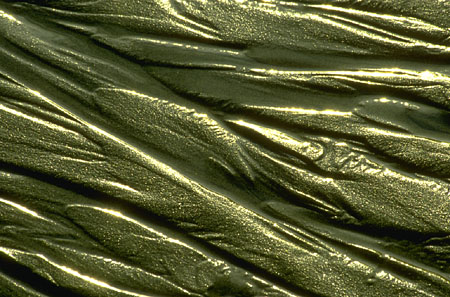LITR 5535: American
Romanticism

Sample Student Midterm 2006
Ashley Huff
10-5-06
Gothic Nature
The Gothic style has had a profound influence in Romantic literature. It started with dreary castles, haunted mansions, and a great fear of the unknown. However, with the evolution of Romanticism several American writers such as, Mary Rowlandson, Washington Irving, and James Fenimore Cooper helped move this gothic element into American nature. There is a progression in these three authors of gothic nature. Mary Rowlandson uses gothic elements occurring in nature, Irvington portrays gothic moving toward nature, and they finally converge in Cooper where the nature is gothic in itself. The gothic style created a terrifying experience associated with haunted houses because it evoked the same emotions within the reader; a fear of the unknown and great danger lurking at every corner. Exploring the gothic elements represented throughout nature is a daunting task; however its effects are portrayed in these works and demand a response.
Mary Rowlandson’s captivity narrative portrayed horrifying aspects of reality. The whole event in itself was gothic, because she encountered a constant fear of the unknown while held captive by the Indians. Her surroundings were bleak and grim to say the least. Her life was in a persistent state of danger while she was wondering through nature with the Indians. She viewed the Indians as a part of nature and while held captive with them she expressed that the “roaring, and singing and dancing, and yelling” of the “black creatures in the night, which made the place a lively resemblance of hell” (Rowlandson138). Rowlandson is using gothic elements, such as the view of light and dark; the Indian is “black” and therefore evil in her eyes. Also in this selection she perceives nature as “hell” as a result of the Indian presence there. Here nature is not gothic on its own, it is gothic because it is the home of the Indians, or the “merciless enemies” (Rowlandson 138). In this captivity narrative another element of nature and the gothic is her child that died and was buried “upon the hill” which caused her to leave the “child in the wilderness and must commit it, and myself also to this wilderness condition” (Rowlandson140). This “wilderness condition” is fear of the unknown, and the mystery surrounding her fate and future existence. Every day is a new experience and she doesn’t know if she will make it out alive or be left in the wilderness like her baby. Although the nature isn’t a representation of the gothic, it is still related because there are gothic elements involved in a nature surrounding. Mary Rowlandson views the Indians in gothic terms such as dark, savage, merciless and is in a constant state of terror of the unknown. This is a precursor for the gothic nature that will come about in Cooper’s novel The Last of the Mohicans.
In The Legend of Sleepy Hollow, the reader is taken on a journey through a little one-stop ghost town. Literally a ghost is there to terrorize the great citizens and thus creates from the beginning a daunting and mysterious place. Not only is Ichabod the victim of the ghost he is also the victim of his own imagination which caused him to go crazy because of the gothic atmosphere. Irving points out that Ichabod loved to fill his head with these ghost stories and tall-tales of the townspeople. The place was described with a gloomy setting and dark mysteries that could not be explained, such as “fearful shapes and shadows” that “beset his path amidst the dim and ghastly glare of a snowy night” (Irving4). This fear of the unknown is a classic gothic tribute and the nature of the town created this effect. The darkness creates a fear in the reader to all the things that could be lurking in the shadows, just waiting to snatch Ichabod. He too feels this sense of great fear at the “mere terrors of the night, phantoms of the mind that walk in darkness” (Irving4). Being that Ichabod’s mind did “walk in darkness” so to speak it is no wonder that he reacted so fearfully the night he left the house of his unrequited lover. Irving reminds us of his evening and states “All the stories of ghost and goblins…came crowding upon his recollection” (Irving12). He knew that “perils lay before him” and got the feeling of a scared schoolboy when crossing the “haunted stream” (Irving 12). Cooper also uses references to streams and water to portray the danger his characters are in. Ichabod flees to the outskirts of town because he is being chased by the mysterious ghost, known as the headless horseman, and the scene becomes even more gothic in nature. Michelle Gooding in her midterm “The American Gothic: A new Individual and Space” makes a good point when she wrote “The ‘deep black’ of the stream and the trees that ‘cast a gloom’ are what make this scene gothic, rather than any part of the architectural setting-the bridge is only frightening because of what is above and below it”. Michelle continues to state that the “broken rock and trunk of fallen trees” give the reader a notion of ancient decay that adds to the gothic scene. The church becomes almost a place of fear instead of sanctuary, and Ichabod sees the “walls of the church dimly glaring” (Irving14). This doesn’t offer the hope he had intended, no salvation, instead just an empty building and a ghost that is quickly gaining on him. There are many references to darkness, gloom, fear and such that evoke a similar fear in the reader to the possible outcome of Ichabod’s fate. These aspects of the gothic create this emotion of fear in the reader; fear for the character’s wellbeing and indirectly their own as well. They are moved to consider their own dark room and to look twice at shadows as the walk down the sidewalk.
The Last of the Mohicans brings together these aspects of the gothic and nature to create a gothic nature. The woods in this novel are haunted, mysterious, and fearful. Many times they are referred to as gloomy, such as when they get lost and Heyward notices “the gloom that was thickening, beneath the leafy arches of the forest, he felt as if cut off from human aid” (44). These elements of fear and danger are classic gothic repeated often in Romantic literature elements. One could experience this same reaction and emotions when being trapped in the haunted houses or ghost towns that many Gothic novels relay. Heyward also experiences “His awakened imagination, deluded by deceptive light converted each waving bush, or fragment of some tree into human forms” he could see the “horrid visages of lurking foes, peering from their hiding places” (44). This could easily be a scene from Irving’s The Legend of Sleepy Hollow in which Ichabod also allows his mind to be overtaken by this fear of the unknown.
There is also the Indian graveyard, with the “building so decayed” and the “ruins” that created a “natural horror” in the girls (143). Decay is another classic gothic element seen in Irving and Cooper. The graveyard is considered haunted and described as having “gray light, the gloomy little area of dark grass, surrounded by its border of brush, beyond which the pines rose, in breathing silence…and the death-like stillness of the vast forest to deepen such a sensation” (143). This description is very gothic, it contains elements of light and dark, the gray is a mix between the two forces good and evil. The “death-like stillness” seems to beckon anyone to make a noise and disrupt its evil reign upon nature. Similar to Rowlandson the Indians add to this gothic view of nature. They are seen as one with nature often and thus require nature to respond to their wickedness. Here again in this novel the Indians are dark and likened to “cunning devils who fill these woods,” which contrasts greatly to the poor innocent girls with a “brighter, though sunburnt complexion” which “claims descent from European parentage” (24). The Scout proclaims he will do whatever he can to “keep such flowers, which, though sweet, were never made for the wilderness” (45). They are pure and thus not cut out for this gothic nature which produces threats and harm to their safety.
Often times nature itself responds to danger and the fear of its inhabitants. The streams often divulge a sense of danger and many times they react to this gothic nature before anything has taken place. Prior to Magua’s attack at the cave, “the water, a few rods above them, plunging, glancing, and sweeping along, in its most violent and broken manner” gave warning to what was about to take place (63). Irving also uses a “haunted stream” when Ichabod is in danger. When the “cry that seemed neither human nor earthly” screamed out the stream also reacts to this gothic element of fear as the “waters had been checked in their furious progress” (62). This cry further explains the dire situation of Cora, Alice and their friends. The traveling party is similar to the horses in being frightened by the coyotes, as they are both either “prey to the beasts of the forest” or someone who can “see his danger without the power to avoid it” (67). These people are helpless and in grave danger; they are at the mercy of nature and the Indians. At any moment their lives can be over, and this produces a great fear of the unknown. The forest leaves the traveling party in a “total uncertainty of their fate” which is a paramount element to the gothic style (88).
Rowlandson, Irving, and Cooper all explore fabulous elements of the gothic in their writings. There is fear of the unknown, danger, darkness, and all the other great things that draw a reader into the narrative. Readers can feel the gothic pulling them into the story, and thus create an awareness of the gothic in play at every turn. Not only are readers fearing for the characters well-being, but also their own so they do not venture off like Ichabod into nature to take their chances with fate.
Works Cited
Cooper, James Fenimore The Last of the Mohicans New York, NY Barnes and Nobles Classics, 2003
Rowlandson, Mary “A Narrative of the Captivity and Restoration” The Norton Anthology of American Literature Shorter 6th Edition Ed. Nina Baym New York: Norton and Company, 2003. 135-152
Irving, Washington “The Legend of Sleepy Hollow” Handout Dr White
Michelle Gooding, Sample Student Midterm, LITR 5535: American Romanticism, Dr White
|
|
|
|


